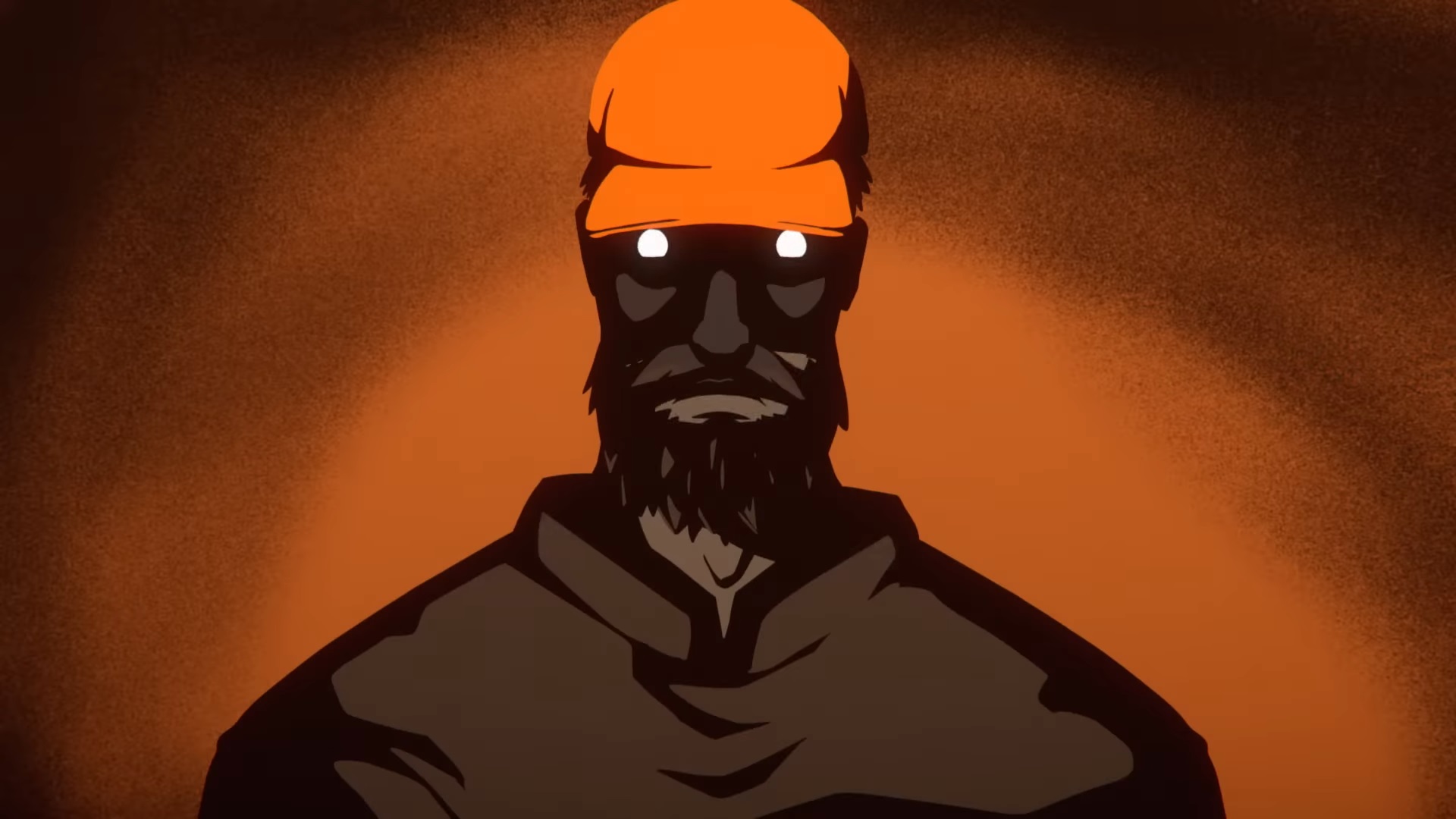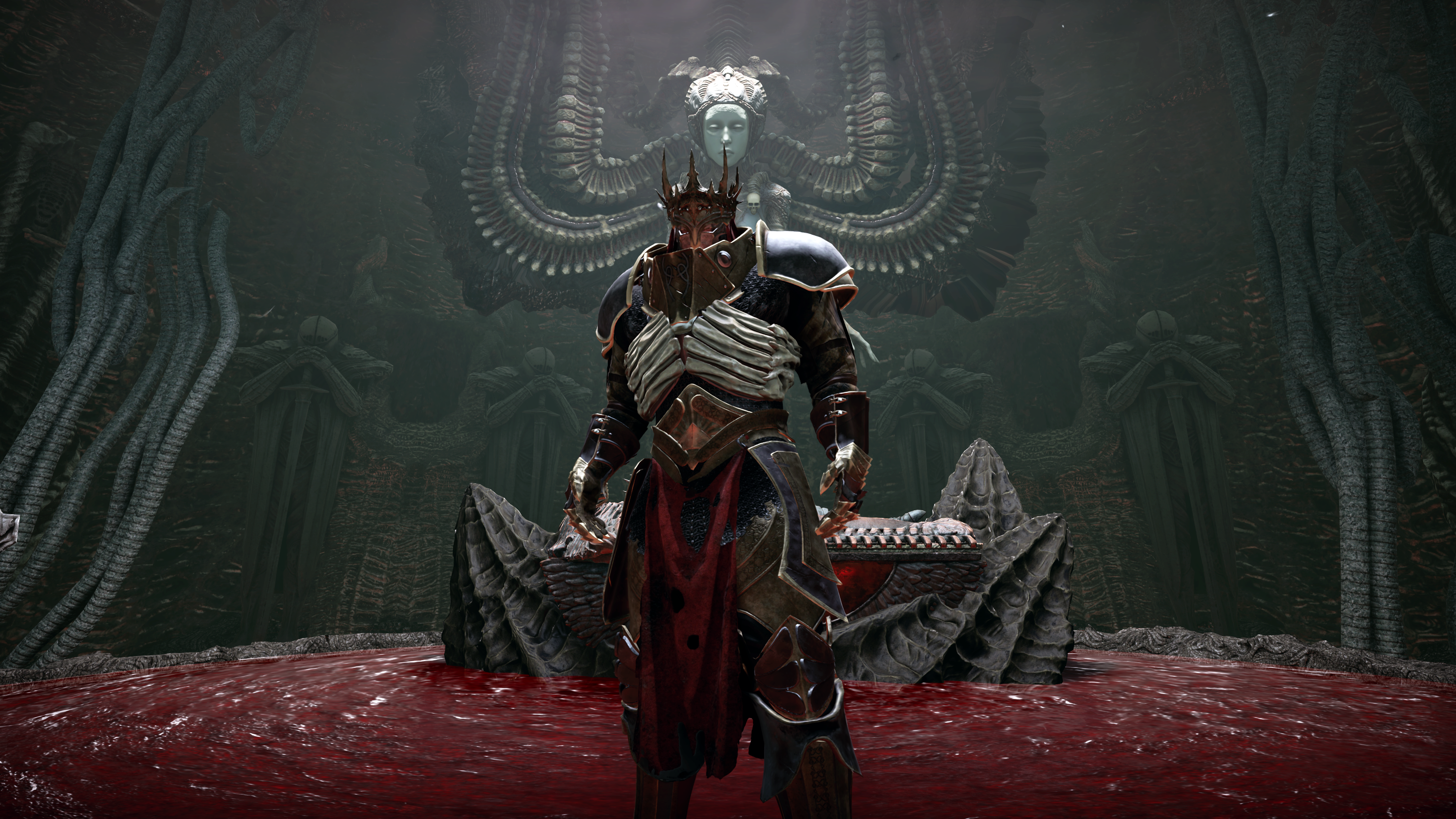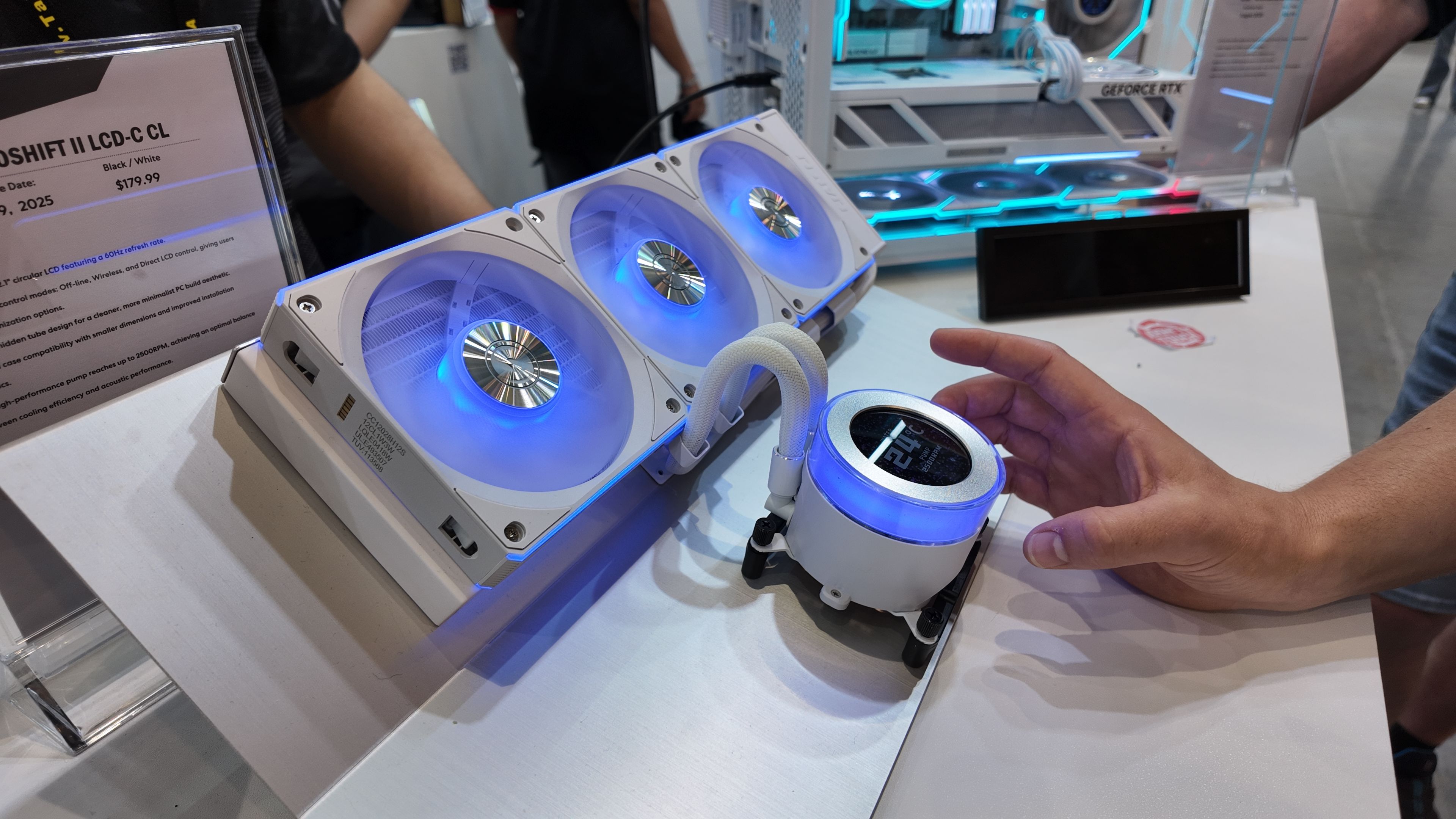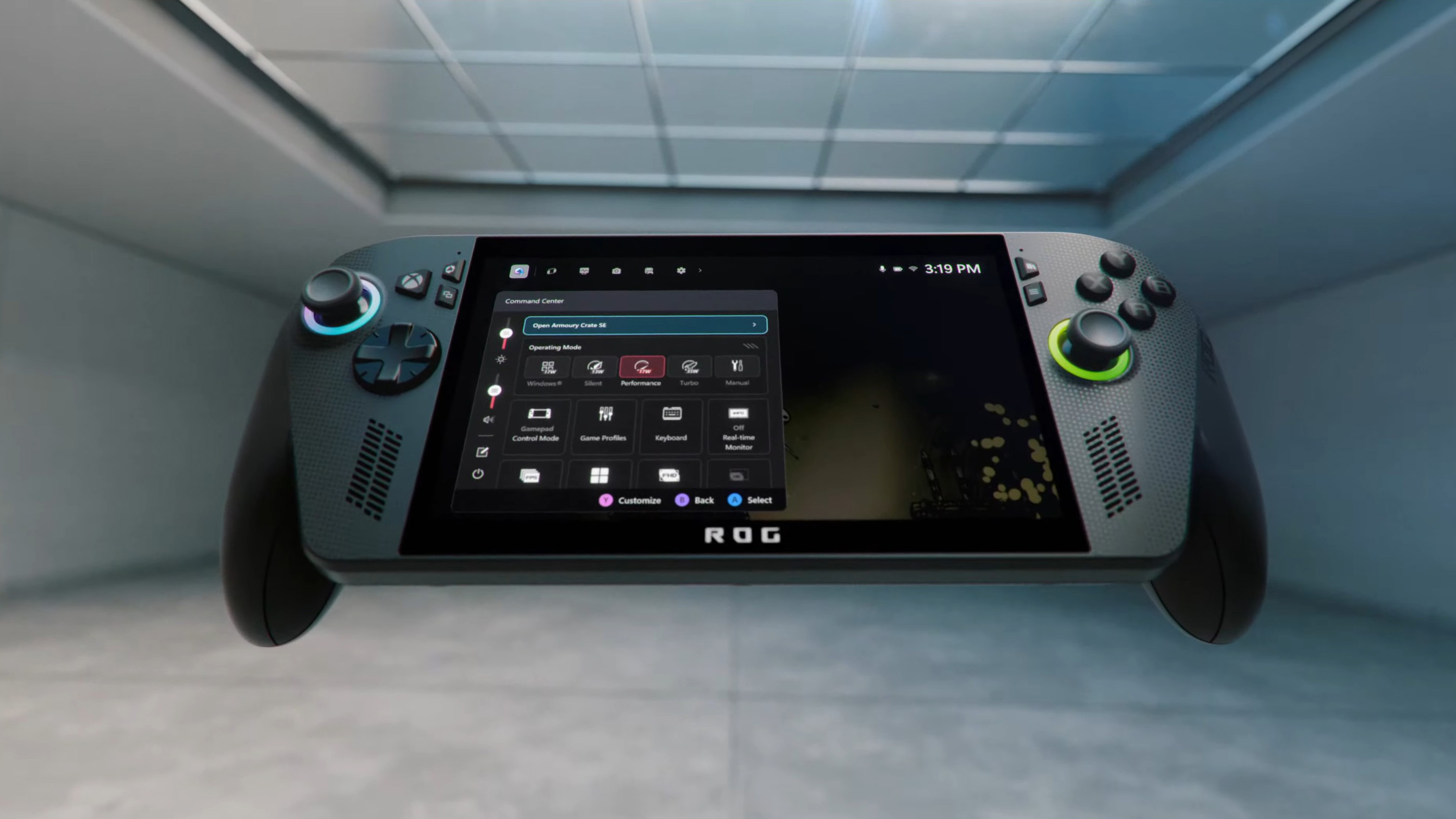
The Last Worker's tale of worker rebellion is anchored by some rock solid timed navigation puzzling.
The Last Worker tells the story of the literally very last worker at a near-future, Amazon-style mega warehouse the size of Manhattan: a man named Kurt who seems to have been missed in massive, automation-driven layoffs, forgotten in the system like Milton from Office Space. While that sounds like a supreme megaton bummer, I was quite surprised at how good of a hang it was in a hands-on preview of The Last Worker’s first two chapters. Sorting boxes and tooling around a cavernous sci-fi warehouse in a flying mobility scooter is perhaps the last fun allowed under capitalism.
After a basic movement tutorial—here justified by your robot buddy going on the fritz and thinking it’s your first day again—you’re flung into your standard day-to-day at the Jüngle corporation. The Last Worker is more restrictive of your movement than a classic six degrees of freedom shooter like Descent, but it feels good to control Kurt’s little hovercraft. It gives a weighty and ponderous impression while still feeling quite responsive, and zooming through these cavernous environments just feels good on mouse and keyboard or controller.
The Last Worker is designed for both VR and normal monitors, and even as a general VR skeptic, I gotta admit this is one game like Beat Saber or Resident Evil 7 that makes me wish I had a headset. I don’t feel like I’ve been cheated on a flat panel though. The environments have this inhuman quality that I dig, practically inducing megalophobia. Vast chasms and row after row of cardboard boxes in cubbies feel like they were designed for flying robots first, and humans second, while I felt really grounded in Kurt’s little hovercraft thanks to details like his face in the rearview mirror, body slouching in the driver’s seat. A picture of an ex-girlfriend pinned by the mirror is an especially sad touch.
Most of my time in The Last Worker is spent rushing to pick up packages, checking them for damage or other inconsistencies, and taking them either to fulfillment or recycling, with a constantly depleting meter representing your corporate metrics. Similar to how Inscryption’s subversive story was buried under a fully-fleshed out, addictive card game, The Last Worker’s later drama is preceded by a warehouse-working sim that’s fun enough to stand on its own as a straightforward arcade experience.
It’s the first time the game really swings from “cartoonish, Venture Bros. evil” to “heartbreaking, recognizable, real-world evil.”
I see it as a timed navigation and matching puzzle, and your minimap (represented as a hologram projected by the hovercraft) only gives you lateral coordinates by default, with an extra button press pulling up a more detailed map and a ghost trail to your objective. I’m always a fan of games adopting a “let me figure it out first” approach, while still having a quick and easy way to pull up a hint—the perfect midpoint between obnoxious handholding and getting thrown in the deep end. Each package sees you making a mad dash to the right spot, then zooming up or down to the proper cubby. Yank the package down, inspect it for defects (and assign a proper sticker if it’s bunk) then zoom on over to the proper chute for processing or disposal.
I’d take a whole game of just this, and The Last Worker introduces complexity with alternate package discrepancies to watch out for (weight, expiration date, size, etc.) and at one point in the preview, a secondary objective to chase down while still juicing your performance metrics with timely sorting. One of my favorite details is that you get a peek of every package’s contents after a successful sort, with punny, dystopian products like baby VR glasses or a circumcision training kit subsequently unlocked in a model viewer off the main menu.
The Last Worker’s other primary gameplay is stealth/exploration in off-limits areas with the same six degrees of freedom controls. I think the game thoroughly benefits from its simple, line of sight-based stealth, often with clearly-defined cones of vision for security bots. It’s an arcadey simplicity that feels both fair and just complex enough for its place in the game, and it still allows for classic, risky Metal Gear maneuvers like scurrying to a safe bit of cover just as an enemy’s about-facing in their patrol route.
(Image credit: Oiffy, Wolf & Wood)
(Image credit: Oiffy, Wolf & Wood)
(Image credit: Oiffy, Wolf & Wood)
(Image credit: Wired Productions)
I’m already coming around to The Last Worker’s affable cast of characters, particularly Kurt, played by Ólafur Darri Ólafsson. Kurt’s just a dude who wants to be left alone, and despite everything he seems to take a certain enjoyment and pride in his work, something I can relate to from working in food service: customers always got me down, the pay was bad, and it felt like I had no future, but I could make a mean latte damn it!
He’s a creaking ship past his prime, but becomes the centerpiece of this drama precisely because he’s good at his job and kept his head down for so long. The story’s already provided some decent pathos as well, with a sequence where you rescue a cow from the fulfillment center’s automated slaughterhouse particularly winning me over.
It’s the first time the game really swings from “cartoonish, Venture Bros. evil” to “heartbreaking, recognizable, real-world evil,” and really isn’t even that far off from how livestock are treated today. It’s not polemical or ham-fisted (well, apart from the literal chainsaw thresher they shove the cows into) either, and I’m looking forward to seeing what other gut punches The Last Worker has in store down the line.
The Last Worker comes out of the gate swinging then, and we don’t have to wait long to see how it follows through. The Last Worker releases on March 30, and you can wishlist it now on Steam.




